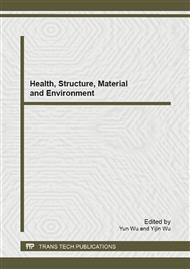p.922
p.926
p.930
p.936
p.941
p.946
p.953
p.958
p.964
Allocation Model of Total Energy Consumption and Pollutant Emission Control Based on Low-Carbon Economy and its Significance
Abstract:
As the rapid development of Chinese economy, the total energy consumption and pollutant emission increased increasingly, which lead to a terrible situation in energy safety and environmental pollution. In the meantime, the greenhouse gas (GHG) and pollutants (such as SO2, NOx and NH3-N) generated by energy consumption increased, and the above pollutions had brought a substantial negative impact on global climate change and low-carbon economy (LCE) development. This paper analyzed the situation of energy consumption in China, and revealed the significance of total energy consumption. Energy consumption control based on LCE theory was the effective protection measure of national resources and energy security, and could promote the economic development and adjustment of industrial structure, which was investigated from three aspects expressed as three allocation models in the article. The results indicated that, energy consumption control can promote development of LCE by protecting eco-environment and sustaining security of energy and resources, and supporting steady development of our society by minimizing the utilization of energy, and the above aspects would be the key points in control of total energy consumption and pollutant emission during the 12th Five-Year Planning in China.
Info:
Periodical:
Pages:
941-945
Citation:
Online since:
February 2013
Authors:
Price:
Сopyright:
© 2013 Trans Tech Publications Ltd. All Rights Reserved
Share:
Citation:


